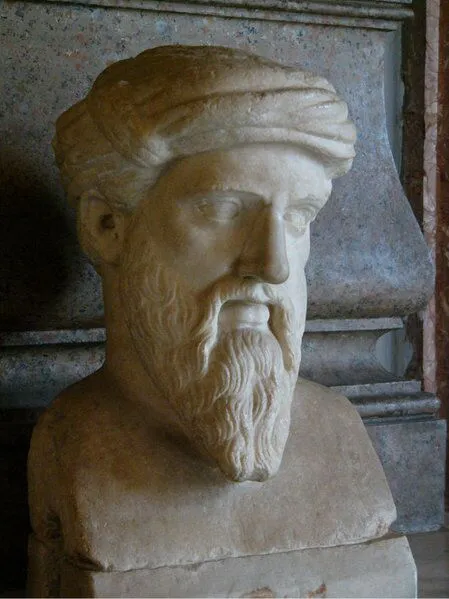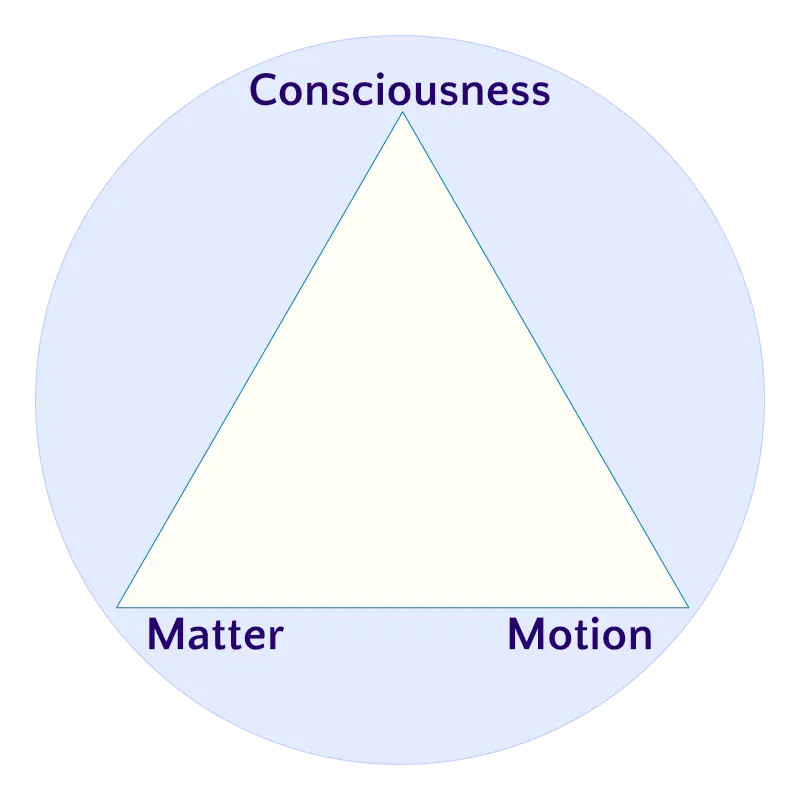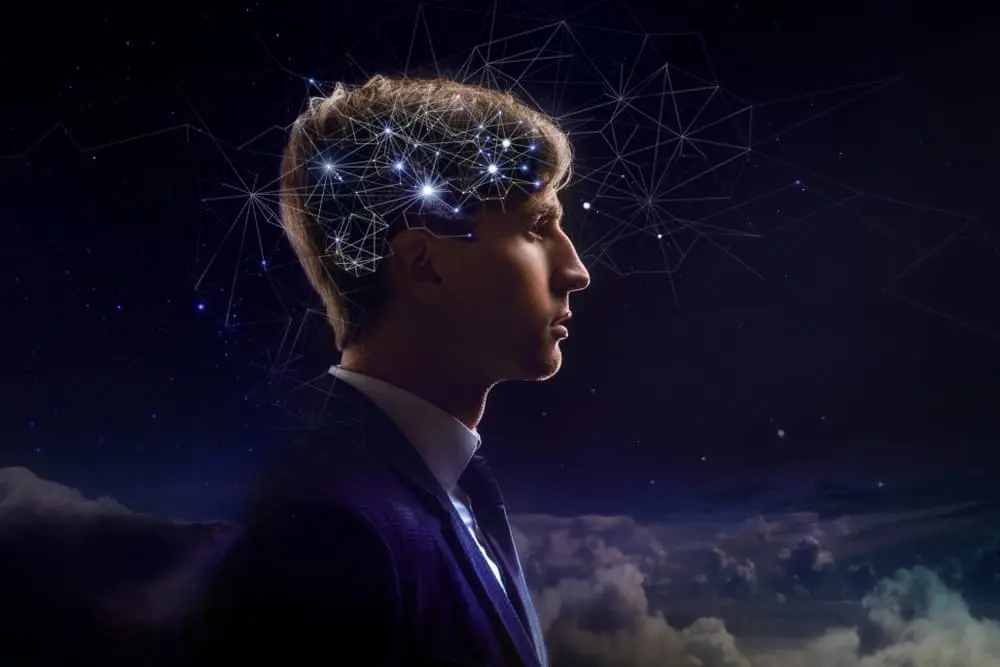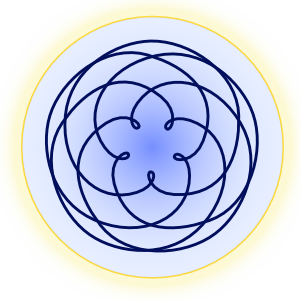The Meaning of Life
Why do we live? Why have we born into this world and what is the aim of it all? Is there a meaning for existence? All thinking people have asked themselves similar questions and tried to find meaningful answers. It hasn’t been easy as humanity has not been able to solve these riddles or even worse, such questions have been regarded as pointless by some. Earthly powers during centuries have been keen on veiling the true meaning of life and bonding people’s interest with lower values and life-hostile principles.
Published May 27, 2021

What is the aim of your business? What is the purpose of your work-project? What is the goal of your long-term undertaking? It has almost turned into a norm to ask such questions in the busy 21st century. But when it comes to the meaning and aim of life, people are stuck with superstitions or ignore this question as too “deep and metaphysical” to offer any useful direction in everyday life.
The Western world has been haunted by the question of the meaning of life for a long time. “To serve the will of God” for the religious or just “to survive in the human jungle” for others are some of the explanations offered through the recent history of mankind. But for most people, even for many intellectuals, finding the meaning of life has faded into being an unsolvable puzzle. Earthly powers have been successful in luring people’s attention away from essential values in life and filling their minds with trivial pastimes and emotional attractions. Propaganda for just-one-life and increasing focus exclusively on the physical material world has influenced people’s subconsciousness and has diverted mankind’s attention from the search for the real meaning of existence.
Though it might be obvious that power, fame, wealth, honour etc cannot possible serve as the true meanings of life, still many pursue such paths with remarkable enthusiasm. The hypnotic influence of the physical material world and physicalist outlook has made its mark.
The meaning of life cannot be torn out of the context of a broader world-view and explanation of reality. It is as closely connected to an understanding of the world as it can be. So, it has to be based on a knowledge of reality and a comprehensive world-view, which can serve as a solid hypothesis until we can ourselves prove the validity of it.
The meaning of life is consciousness development

According to hylozoics, a world-view formulated by wisdom-lover (aka philosopher) Pythagoras, the meaning of life is consciousness development of the monads (primordial atoms) in the consciousness of ever higher kinds of matter of ever higher natural kingdoms.
This development (activation) begins in the mineral kingdom, goes on in the vegetable kingdom, animal kingdom, human kingdom, etc. Esoterically this was expressed in the symbolic saying:
“Consciousness sleeps in the stone, dreams in the plant, awakens in the animal, and becomes self-consciousness in man”.
The human monad is the monad during its evolution in the human kingdom, the fourth natural kingdom. The goal for all human monads is to reach the next higher kingdom – the fifth natural kingdom, also called essential kingdom or the kingdom of unity. There are twelve natural kingdoms in all. A natural kingdom is a collective of monads that has reached the same greater stage in the activation of their consciousness. Each higher natural kingdom implies for the monad an enormous increase in consciousness, in intensive as well as in extensive respect, an increase of its share in the cosmic total consciousness, until the individual in the highest kingdom has incorporated this totality in his individual consciousness.1
The goal of life is the omniscience and omnipotence of all monads in the whole cosmos. The monads receive help for their development, as the whole cosmos with its involution and evolution has come about for the monads’ sake.2
The monad is indestructible individual consciousness which, being originally potential (unconscious), is roused to active consciousness in the lowest natural kingdom of the lowest world (the physical mineral kingdom) and gradually acquires consciousness in ever higher worlds. Only the coarsest matter offers sufficient resistance for the subjective monad consciousness to learn to discriminate between the opposites of inner (subjective) and outer (objective) reality, and to acquire active consciousness, which is the prerequisite of self-consciousness in all kinds of reality. After that, the monad is able by self-activity to acquire the requisite qualities and abilities in ever higher natural kingdoms in ever higher worlds.3
Everything is divine for everything has been formed by the highest beings in order to enable the monads to acquire ever higher kinds of consciousness. The monads are potentially divine and will some time be actually divine. The guarantee of this is their unlosable share in the cosmic total consciousness. Nobody can be lost definitively. Everybody will reach the final goal of life sooner or later.
The individual will be fully conscious of his potential divinity only when he has entered unity, the consciousness of community of the essential (46) world, and experiences that all monads are one because of their share in the total consciousness: all have the same origin and all will reach the same goal. All will, when they have entered the fifth and higher kingdoms, live in order that the meaning of life be realized, live to help others to reach higher.4
Truth, or the knowledge of reality, no man can find. It is a gift from those in the fifth natural kingdom. We can merely ascertain that it accords with reality, since it explains rationally thousands of otherwise inexplicable phenomena and affords an incomparably superior understanding of life.5
The basis for consciousness development
Pythagoras explained that reality has three aspects which are indissolubly and inseparably united without confusion or transformation, that all three are indispensable for a correct conception of reality.

The trinity of existence is made up of:
- the matter aspect
- the consciousness aspect
- the motion aspect (the energy aspect)
None of these three can exist without the two others. The three aspects explain themselves by their modes of being and cannot be further explained, only be ascertained by everybody.
All matter is in motion. All matter has consciousness. Every molecular and atomic kind has its peculiar kind of consciousness. Consciousness is either potential (not roused) or actualized (roused). Actualized consciousness is passive (inactive) or active.
The basis of the ultimate unity of everything is matter, which is one, primordial matter; consciousness, which is one, the cosmic total consciousness; force, which is one, the dynamic energy of primordial matter. These three are indissolubly and inseparably united without confusion or conversion.
It is a seemingly ineradicable view that we do not know what the three aspects of reality “actually are”. We certainly do. They manifest themselves in 49 different ways in the 49 different atomic worlds and they are equally real in all of them. Of course a man cannot know how they manifest themselves in the superhuman worlds. But we know how they manifest themselves in the lowest three atomic worlds (47–49), the worlds of man, and it is from this fact that we must start in our position to the aspects. Otherwise we end up in a conceptual chaos, which the fate of philosophy clarifies to us.6
The one-sidedness of speculation as regards the theory of knowledge can be seen in the fact that the three foremost philosophical views have each been able to discover only one side of reality, but not the Pythagorean synthesis.
The scientists maintain that “everything is matter”. The subjectivist philosophers of the West and the East assert that “everything is consciousness”. The nuclear physicists now eagerly advocate that “everything is energy”. The observable physical matter dissolves before their eyes into “nothing”, or energy phenomena, and they at once conclude that “matter dissolves into energy”. Only the esotericians know that it dissolves into matter that is invisible to the physicists, the energy effect of which matter is enormously greater because it is of a higher molecular kind.
This, the only correct conception of reality, Pythagoras called hylozoics (spiritual materialism), thereby doing away with the antithesis of spirit and matter and explaining that “spirit” is the indestructible consciousness of the atoms.7
About consciousness

Consciousness as consciousness is subjective. Sense perceptions, emotions, and thoughts are subjective. Consciousness as “inner” consciousness, as awareness of its own content, is subjective.
Consciousness is objective when it apprehends something that is “external” to consciousness, something that is independent of consciousness, something that belongs to material reality.8 Or in other words – consciousness is objective when its content is determined by material reality. Objective consciousness is direct, immediate, and unreflecting apprehension of matter, the forms of matter, and motion. Objective consciousness is the only possible source of all knowledge, the ultimate proof of a correct conception of reality.9
Consciousness in higher molecular kinds that are as yet insufficiently activated is apprehended as subjective when activation begins. Consciousness in a particular kind of matter always begins as subjective before it can be objective. Full objective consciousness of all the molecular kinds of any world is obtained only at the automatization of the individual’s envelope of that kind of matter.10
There are as many kinds of subjective and objective consciousness as there are molecular kinds. At his present stage of development, the normal individual (the majority of mankind) in physical incarnation is objectively conscious only in the lowest physical molecular kinds 49:5-7 (solid, liquid and gaseous kinds of physical matter) and subjectively conscious in:
- 49:2-4 (three etheric physical kinds of matter) – mostly experienced as physical vitality or the lack of it;
- 48:4-7 (four lowest emotional kinds of matter) – mostly repulsive, negative feelings;
- 47:6,7 (two lowest mental kinds of matter) – discursive (47:7) and principle thinking (47:6).
Those who have reached the highest level of the stage of culture (e.g. of the mystic) have acquired subjective consciousness in the highest emotional molecular kind, 48:2. Those who in mental respect have acquired perspective consciousness are conscious in mental kind 47:5.11
Matter is the vehicle of consciousness. When consciousness has so developed that it can function rationally, then consciousness and not matter will “decide”. Consciousness can assimilate the energies of life and thereby control matter. That is magic. The individuals of the fifth natural kingdom demonstrate that this is possible and how it is possible. But it requires that the individual knows what he is doing and is conscious of his responsibility for everything and everyone. The power of the matter aspect is abolished when the individual has become a causal self and can apply the Law rightly. Then the consciousness aspect seizes power. It is consciousness that develops the brain from the start; it is not the brain that develops consciousness. The brain is an instrument and functions as a receiver and transmitter.12
Just as a higher kind of matter penetrates lower kinds, so a higher kind of consciousness apprehends lower consciousness. On the other hand, a lower kind cannot apprehend a higher kind, which always appears non-existent.13
The most important insight (on consciousness) is that all consciousness is at the same time collective consciousness. This is so because there is no personal isolation, although only those who have acquired essential consciousness (46) can live in the collective consciousness.14
What the self is
The self is the consciousness of the primordial atom, the monad. All other consciousness is of the envelopes. By the term “monad” is meant the individual’s matter aspect; by the term “self”, the individual’s consciousness aspect. The self’s understanding of reality is dependent on consciousness in the monad’s envelopes and the ability of activity of that consciousness.15
We cannot have any true proof of the self as a monad. We have been given to know that the self is “psychologically” the very attention and that attention is the sign of the presence of the monad in some one of its envelopes. Besides a physical organism, man has four envelopes in physical incarntion: an etheric, emotional, mental and causal envelopes. When we experience our feelings, then the self is in the emotional envelope, and when we “think” purely mentally, the self is in the mental envelope or, expressed more correctly: the monad in the triad has its attention directed to what is happening in the emotional or mental envelope. We activate consciousness in our envelopes and in their different molecular kinds by directing our attention (“living in”) ever higher kinds of consciousness. If we direct our attention towards lower kinds, then “we live” in this lower and strengthen the power of this lower consciousness to attract attention.16
Man’s stages of development
Classes are the natural order of things. The classes of nature indicate different classes of age, in the human kingdom as well as in all other natural kingdoms, both lower and higher ones.
Consciousness development is a very slow process. Consciousness development appears in an immense series of levels from the lowest mineral consciousness to the highest cosmic consciousness; more correctly: in a multitude of series within each natural kingdom.
To understand the great number of levels within each stage of development one should know that each molecular kind consists of 49 material compositions and therefore presents 49 different “nuances” of consciousness in the lower worlds. In the higher worlds these are synthesized so that the kinds of consciousness follow the molecular kinds.17
Human consciousness development during tens of thousands of incarnations presents five stages, divided altogether into 777 levels (from lowest to the highest):
| STAGE | NUMBER OF LEVELS | TYPICAL CONSCIOUSNESS |
|---|---|---|
| BARBARISM | 400 | lower emotionality prevails |
| CIVILIZATION | 200 | emotionally determined lower mentality |
| CULTURE | 100 | higher emotional stage or stage of the mystic |
| HUMANITY | 70 | first true mental stage, higher mental consciousness is activated |
| IDEALITY | 7 | causal consciousness is activated |
What consciousness development means
“Consciousness development” can be a strange term for many, because they do not see how these two words fit together. In ordinary language and also in ordinary thinking, a person either has consciousness or not, e.g. falls to coma, is knocked unconscious for a certain time etc and after being unconscious regains consciousness. Consciousness development hardly exists in an ordinary world as people think they are fully conscious – they ask if there really is something to develop?
But there are those to whom consciousness development is the very meaning of life and those who have discovered this path. Emphasis on the consciousness aspect opens up a whole new world to explore, learn and progress.
The monad develops through learning from its own experiences and reaping what it has sown in previous incarnations.18 Consciousness development has to do both with increasing one’s knowledge and increasing one’s being. Nobody achieves anything by only increasing or deepening his knowledge, for if his being is not improved at the same time, his increased knowledge will harm more than help him and those around him. If his being is improved, however, while his knowledge is increased, then his understanding will grow as well. Understanding is a combined function of knowledge and being.
Knowledge is about what is true and what is false, what is real and what is unreal. Being is about what is good and what is bad, what helps you to progress, and what hinders you. To grow in both knowledge and being is to seek the truth, or reality, as the highest good by striving to be true to what is best in you.19
Above all, knowledge is hylozoics, which affords the requisite knowledge of the meaning of life, that is, the consciousness development of the monads, the rationality of existence (the laws of life), and the necessity of action (the explanation that we must reap also our omissions). Hylozoics affords the knowledge of the fact that man has higher envelopes with passive consciousness which can be activated, in which process he himself can be transformed into higher states. Only this knowledge affords a motivation for the work at developing consciousness, since striving is then directed at real existing factors.20
Consciousness development is determined by many elements, so it cannot possibly be exhaustively handled in this short presentation. Just the following introductory remarks can be given:.
Firstly, consciousness development depends on self-activity, which lays the basis for any development in essential respect. Self-activity is activity triggered by the self’s own initiative, own efforts, own work. It is the activity of the monad, which is permanent, not of the envelopes, which are of non-permanent, temporary nature for the monad, the individual.

Every consciousness expression entails activity in some kind of matter. Active consciousness reinforces itself by consciousness expressions. Activity develops the ability of activation and strengthens the content of consciousness.
By attention we decide the content of our consciousness. By means of thought we acquire feelings and qualities. The more resolute and intensive the activity, the greater is the effect achieved.
In every (conscious) choice the result is determined by the strongest motive. This is determinism, still misunderstood. Thanks to this law, the individual can win freedom of choice by methodically strengthening his motive (any whatsoever), until it becomes the strongest one. It is by our self-activity alone that we can liberate ourselves from our automatized dependence on those fictions and illusions of the ignorance of life which we have unsuspectingly incorporated with complexes ever since childhood.21
Consciousness development is subject to the law of activation which among others says that every expression of consciousness becomes a cause that has an inevitable effect and that without your own activity consciousness does not develop, nor are any qualities or abilities acquired.

Secondly, conscious efforts are needed. Not all efforts and expressions contribute significantly to consciousness development, but just conscious efforts and striving can bring about a qualitative change in consciousness. The explanation for that is the following.
In general, consciousness expressions of human beings can be divided into conscious and mechanical ones.
Mechanical is everything that is an expression of man’s envelopes, especially expressions of emotional and mental envelopes without the intention of the self. All those emotions and thoughts that come and go at random, vibrations coming from without or incidental emotional impulses coming from individual’s subconscious. At the stage of civilization, scarcely five per cent of the content of consciousness is self-initiated, self-determined. Whenever your attention is not occupied with your necessary everyday cares and duties, your own activity grows weaker. Instead consciousness becomes receptive and, therefore, mostly the victim of negative influences.22 Man, such as we know him in all essentials, is a machine. Things “just happen to him” without his willing or controlling it. And the idea of the mechanicalness of man must be very clearly understood in order to see all its consequences arising from it.23
Conscious are those consciousness expressions, which are intentionally created by the monad itself, by the self. It is most important to learn not to identify with the consciousness of your envelopes, but effect the self’s control over its envelopes. This presupposes control of consciousness, at least of some degree, which is the result of systematic and methodical efforts of the self, who really aims at development.
The more intentional the individual is in his feeling and thought, the more and the better he activates such emotional and mental consciousness as have been superconscious up to then. This is so because the lower, the negative emotionality is always mechanical, outside our intentional control, and the more so the lower and the more negative it is; and conversely: the higher, the more positive the emotionality, the more intentional and conscious it can be.24
It is the task of all evolutionary monads, all the way from the mineral kingdom, to activate consciousness. This means making the self-active consciousness of the monad dominate the passive consciousness of the envelopes. In this work, our most important tool is attention, to be more precise: the attention directed by the monad itself. This directed attention is the only qualitative degree of attention that is of any significance for consciousness development, consciousness activation.25
Attention can be divided into four different kinds:
Ordinary man fills his waking time in two lowest kinds of attention – either exercising wandering or non-existent attention (habitual inattention, also associative, mechanical mental processes, which is called “thinking” etc) or attention drawn by the object (watching a movie etc). It is characteristic of those lower kinds that it does not require any inner effort by the self. The self is not present, but what is then happening with man is exclusively the mechanical and automatic activity of his envelopes. Attention of these two kinds therefore is of no significance for consciousness activation.
It is only when we direct attention from within ourselves that the self is present. This cannot be done without a certain inner effort. Self-directed attention is the starting-point of all hylozoic methods of activation, since only in this kind of attention the monad is present and active. That the monad is active means that its energies are for the moment stronger than the energies of the envelopes, dominate those energies.
The highest kind of attention in the human kingdom is self-consciousness, that is: directed attention with simultaneous self-consciousness. Self-consciousness is possible for man thanks to the causal envelope, his only immortal envelope, as causal consciousness (47:3 at the lowest), always implies self-consciousness as well. Mere mental consciousness (47:4-7) does not suffice for this. Self-consciousness is the monad’s consciousness of being a self. Self-consciousness is directed attention aimed simultaneously at two different directions:
to the object of attention (things, events external to the man or his own inner world, e.g. emotions, thoughts etc) and
to the self.
Then the self is able to say: “I am observing this and I am at the same time conscious of my own presence here and now. I am observing this – the motion or rest of my organism, or this emotion that is trying to dominate me, or this endless sequence of wandering thoughts – but I am nothing of this. I am the observer.”26
Consciousness can grow only from consciousness, never from some mechanical function.

Thirdly, very hard and purposive work is needed if a person is serious about developing his consciousness. The path of self-realization is the path of arduous work from ignorance to omniscience, from inability and impotence to omnipotence, from bondage to freedom.
The path to truth is the path of your own experience of life through reality seen and lived. You must walk every step of that path yourself. Nobody else can walk it for you. This is governed by the law of self-realization, which states that the individual’s development is his own business, that only the individual can develop himself. Everybody develops by experience, his own working up of individual experiences. It depends on the individual himself whether, when, how, to what extent he will develop. Infallible insight and understanding are acquired only through his own experience.27
Those striving upwards must have realized clearly even as aspirants that it is not a child’s play to hasten ahead of general consciousness development as energetically as to accomplish in about one hundred lives that activation of consciousness which it will take the vast, inert masses of human monads thousands of incarnations during millions years to achieve, but what is required of the aspirants is a very hard, purposive, and goal-oriented work. And as seen from the human angle that work is long, even if it will take “only” eighty or one hundred incarnations instead of ten thousand. Why is it so long and so hard? Because if it were short and easy, we should all have reached the goal long ago. But in fact it is true, as Pythagoras pointed out, that the adept is the rare efflorescence of a generation of inquirers.28
Some factors of consciousness development
Man’s stage of development depends on which kinds of molecular consciousness of his envelopes the monad consciousness is able to activate. All the molecular consciousnesses the monad is unable to activate make up its superconsciousness. The process of activation is a slow process from the first successful attempt to full sovereignty in the consciousness of a molecular kind, a process that requires thousands of incarnations for each new molecular kind. It needed not be like that, but self-initiated consciousness activity is almost non-existent at lower stages of development. When the individual has acquired an insight into this and the ability of continuous self-initiated activity, the final process can be immensely rapid. But then it will be required that the individual is not affected by the consciousnesses of his envelopes activated from without, does not think thoughts coming from without, is not emotionally affected by emotional vibrations from without, thus does not think, feel, speak and act on the basis of impulses, but only out of self-determined factors. Which these factors are will be learnt by the individual slowly at the stages of culture, humanity, and ideality.29
Development is a process conditioned by nature. The individual can accelerate it for himself by applying the laws of life rationally, by hygiene, diet, noble emotions, noble thoughts, by acquiring noble qualities. The ability of the envelopes to vibrate in higher and higher molecular kinds is increased automatically by living naturally. The results will inevitably show in due course of time.30
Conclusion
The more we identify ourselves with the matter aspect, have our attention directed to material forms and consider them to be essential, the less we are able to understand the meaning of life. It is our task to develop consciousness, to acquire ever higher kinds of consciousness and we can do this only if we identify ourselves with the consciousness aspect.
Our motto should be: we are our consciousness, not our bodies. The monad is a primordial atom, an exceedingly tiny part of matter. But the task of the monad consciousness is to identify itself with the cosmic total consciousness. That is a thing most people do not know and the others constantly forget.31
Out of the total of 777 levels of human consciousness development, 70 levels (the stage of humanity) fall within the higher mental development (47:5 and 47:4), thus the activation of first perspective thinking (47:5) and later, system thinking (47:4). If we ponder the fact that even the individual who works intentionally and methodically to develop his consciousness usually does not manage to cover more than one level per incarnation, we realize that also the higher mental development is a process that requires the work of many incarnations. In contrast, anyone who does nothing for his consciousness development can remain on the same level for one hundred incarnations or more.
As long as the individual has not yet had his eyes opened to the fact that the meaning of life is the development of consciousness and therefore has not decided to devote a considerable portion of his power to this end, so long he is reduced to following along with the general consciousness development of mankind, the slow jog-trot during millions of years.32
Henry T. Laurency Knowledge of Life 2. The Consciousness Aspect 5.2.15-16 ↩︎
Henry T. Laurency The Way of Man. Introductions 1.36.8 ↩︎
Ibid, 1.32.16 ↩︎
Ibid, 1.36.6-7 ↩︎
Ibid, 1.10.2 ↩︎
Ibid, 1.25.1-10 ↩︎
Henry T. Laurency The Way of Man. Introductions 5.3.2-8 ↩︎
Henry T. Laurency Knowledge of Life 2. The Consciousness Aspect 5.11.2-3 ↩︎
Henry T. Laurency The Philosopher’s Stone 2.27.3 ↩︎
Ibid, 2.27.5 ↩︎
Henry T. Laurency Knowledge of Life 2. The Consciousness Aspect 5.12.16 ↩︎
Henry T. Laurency The Way of Man. Introductions 1.25.15 ↩︎
Henry T. Laurency Knowledge of Reality 1.16.6 ↩︎
Ibid, 1.16.3 ↩︎
Henry T. Laurency The Way of Man. Introductions 1.33.5 ↩︎
Ibid, 1.33.6 ↩︎
Ibid, 1.40.1-3 ↩︎
Henry T. Laurency The Way of Man. Introductions 1.36.1-2 ↩︎
Lars Adelskogh The Way and the Wanderers. Being 2.1.4,5 ↩︎
Lars Adelskogh About Pythagorean Methods of Activation 3.3.5 ↩︎
Henry T. Laurency The Philosopher’s Stone 3.67.1,6 ↩︎
Ibid, 3.71.1 ↩︎
G.I. Gurdjieff Views from the Real World, p 1114 (e-book) ↩︎
Lars Adelskogh About Pythagorean Methods of Activation 2.3.4 ↩︎
Ibid, 1.2.4 ↩︎
Lars Adelskogh About Pythagorean Methods of Activation, 1.2.5-15 ↩︎
Henry T. Laurency The Philosopher’s Stone 3.31.2,3 ↩︎
Lars Adelskogh About Pythagorean Methods of Activation 4.1.4 ↩︎
Henry T. Laurency Knowledge of Life 2. The Consciousness Aspect 5.21.1 ↩︎
Henry T. Laurency The Philosopher’s Stone 2.62.29 ↩︎
Henry T. Laurency Knowledge of Life 2. The Consciousness Aspect 5.8.11 ↩︎
Lars Adelskogh About Pythagorean Methods of Activation 2.2.6,9 ↩︎

